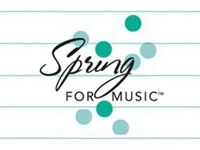
Spring for Music, the short-lived dream-come-true for orchestra-loving new music listeners in New York City, did not go out quietly into the night. Rather, the series went out with a bang so loud my ears are still ringing.
Seattle Symphony with Music Director Ludovic Morlot
Two concerts in particular stood out on the series. The first was the program presented on Tuesday, May 6, 2014, featuring the Seattle Symphony [read our interview of Ludovic Morlot, the symphony’s Music Director, Ed.] and the New York premiere of John Luther Adams’s Pulitzer Prize-winning piece Become Ocean. The work was paired with Varèse’s Déserts and Debussy’s La mer. Adams himself was present for the premiere, after missing the world premiere last year due to emergency eye surgery.
Adams’s piece is a large-scale meditation. The title, taken from words John Cage attributed to the music of Lou Harrison, is embodied in the character of the piece. The ebb and the flow of the orchestra gradually pull listeners out to sea, and they thereby “become ocean” themselves.
The music moves through long crescendi and decrescendi, mimicking the waves and tides of an ocean. The slow swells draw the listener in as tension builds, growing slowly into a mountain of sound that eventually crashes upon the listener in a climax of release before the orchestra returns to its calm and quiet state. In the piece, both extremes of the calm gentleness and the extreme force of the orchestra are exploited to their full potential.
John Luther Adams
For the piece, Adams arranged the orchestra in an unusual fashion. From the audience’s perspective, the violins are on the left, with keyboard percussion behind them and to the left with harp to the right of the percussion. Behind the harp sits the woodwinds. Directly in the center of the orchestra is a piano, with a station of battery percussion behind it. On the right side of the stage sit the violas, cellos, and double basses, with keyboard percussion, harp, and then brass behind them, mirroring the left setup on the stage. Adams used this unusual arrangement in order to achieve the orchestrational effects he had in mind for the piece. No doubt the ideal place for the listener would be beneath the piano!
Become Ocean is a masterpiece in orchestration. In the past, Adams has written similar orchestral works that utilized electronics. For Become Ocean, he set off to achieve the same effects with only the acoustic sounds of the orchestra. His success is embodied in the fantastic display of color and timbre present in the piece from start to finish.
The best decision the Seattle Symphony did was to pair Become Ocean with La mer. The two pieces are both masterfully written studies of orchestration, though their handling of the orchestra is completely different.
The second concert of the week that stood out was the Cincinnati Symphony Orchestra’s (James Conlon, Musical Director) performance of John Coolidge Adams’s Harmonium and R. Nathaniel Dett’s The Ordering of Moses on Friday, May 9, 2014.
No recording can capture the sheer magnitude of Harmonium. The three-movement choral symphony is without a doubt a tour de force in the orchestral world, and the Cincinatti Symphony Orchestra’s interpretation of it was near perfect. The power and might of the orchestra was there, but the piece did not pulse as much as it could have. Rhythmic figures were occasionally lost and replaced by unclear and muddy gestures. However, these moments were only fleeting, and the performance of the piece was still remarkable.
Robert Nathaniel Dett
The second piece of the evening, The Ordering of Moses, is an oratorio about the story of Moses leading the Jews out of Egypt. Written by R. Nathaniel Dett, a Black Canadian composer who was active during the first half of the twentieth century, the work likens the slavery of the Jews in Egypt to the slavery of African-Americans in the United States. The piece incorporates use of spirituals and jazz into its musical language.
During the original premiere and radio broadcast of the piece in 1937 by the Cincinnati Symphony Orchestra, the performance was cut short by angry phone calls coming into the station regarding the race of the composer and the subject matter of the piece. The 2014 performance by the Cincinnati Symphony Orchestra replayed the introduction to the original radio broadcast as well as the interruption over the airwaves during the original performance announcing it would not be completed. However, this time the Cincinnati Symphony Orchestra continued until the very end, providing a well-played interpretation of the work.
As the Cincinnati Symphony Orchestra returned to the stage for an encore, its fans hooted and hollered, waving the Spring for Music scarves they were given before the start of the concert. Suddenly, the concert hall erupted into a rendition of the Hallelujah Chorus from Handel’s Messiah, which the audience was invited to sing along with. This epic performance of the piece, engaging audience members and performers alike, marked a fantastic end to Spring for Music.
Let us take a moment of silence for the loss of Spring for Music.
…
Spring for Music was one of the few orchestral programs new music listeners could look forward to in New York City. With programmatic shortcomings at larger institutions in New York City, Spring for Music was a fearless champion for new music in the orchestra world. Spring for Music, at least for this writer, will be sorely missed.
